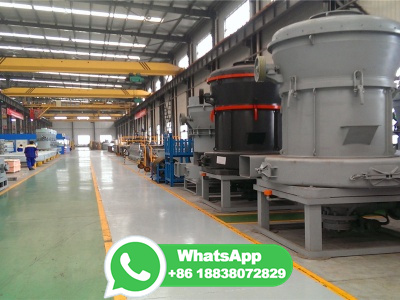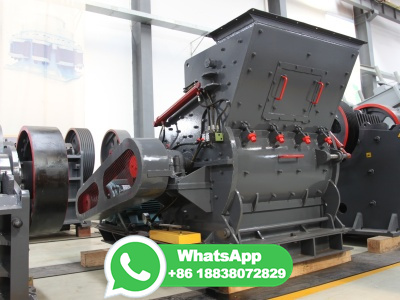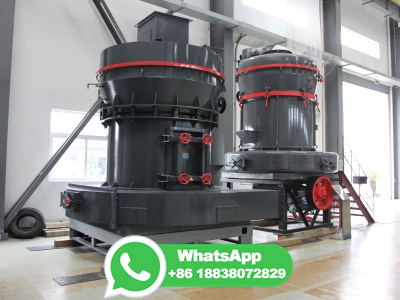
Heat was provided by combustion of coal with air and then the air was replaced with steam to gasify the hot char and produce syngas, a combustible mixture of carbon monoxide and hydrogen. Fontana called the resulting coal gas "blue water gas," because it produced a pale blue flame when burned in air (Probstein and Hicks 2006).
WhatsApp: +86 18203695377
The term Syngas is used for describing a mixture containing H2 and CO, together with minor amounts of CO2 and CH4. Syngas can be produced from Natural Gas (NG), refinery offgases, naphtha, heavy hydrocarbons and also from coal. The choice of a particular raw material depends on cost and availability of the feedstock, and on downstream use of ...
WhatsApp: +86 18203695377
A spread sheet model has been developed which can determine the cost of syngas production based upon the cost of equipment and raw materials and the market value of energy and byproducts. In comparison to natural gas derived syngas, coal derived syngas is much more expensive, suggesting a questionable economic status of coal derived alcohol fuels.
WhatsApp: +86 18203695377
air added to the base can produce a spouted bed. This type of gasifier has often been used to gasify coal. What Is the Gasification Medium? The simplest gasification process uses air as the reactive agent (as shown in Figure 4 on page 6), which converts the excess char into a low energy syngas (142209 Btu/ft. 3) consisting mainly of hydrogen
WhatsApp: +86 18203695377
Gasification. Gasification is a process that turns through a hightemperature partial oxidation of carbonaceous materials to produce syngas, mainly carbon monoxide and hydrogen. The syngas then passes through different treatment steps ended up with a turbine to generate electricity. Various processes technologies are used to produce energy based on gasification: the fixedbed ...
WhatsApp: +86 18203695377
Syngas from biomass gasification can be used in downstream process industries such as city gas, hydrogen production, etc. In this review, the effects of biomass feedstock properties, and gasification reaction conditions (temperature, gasifier type, etc.) on syngas properties are systematically reviewed. In summary, the cracking and reforming of volatile fractions in the gasification process ...
WhatsApp: +86 18203695377
The process of producing "syngas" from coal is called:a. Coal gasificationb. Shift reactionc. Synthesis reactiond. Dehydration reaction📲PW App Link https:...
WhatsApp: +86 18203695377
It is the process of producing syngas, a mixture consisting carbon monoxide (CO), hydrogen (H2), carbon dioxide (CO2), natural gas (CH4), and water vapour (H2O). During gasification, coal is blown with oxygen and steam while also being heated under high pressure. During the reaction, oxygen and water molecules oxidize the coal and produce syngas.
WhatsApp: +86 18203695377
[SOLVED] The process of producing syngas from coal is called . Join / Login Verified by Toppr ), carbon dioxide () and water vapor ()from coal and water, air and/or oxygen. Tenths and HundredthsCan you see the Pattern? Practical GeometrySeparation of SubstancesPlaying With NumbersIndia: Climate, Vegetation and Wildlife
WhatsApp: +86 18203695377
To produce hydrogen from coal, the process begins with partial oxidation, which means some air is added to the coal, which generates carbon dioxide gas through traditional combustion. Not enough is added, though, to completely burn the coal only enough to make some heat for the gasification reaction. The partial oxidation also makes its own ...
WhatsApp: +86 18203695377
syngas, mixture of primarily hydrogen and carbon monoxide that often also contains some amount of carbon dioxide and methane and that is highly combustible. Syngas is used primarily in the production of hydrocarbon fuels, such as diesel fuel and methanol, and in the production of industrial chemicals, particularly produced from waste materials and other biomass is considered a ...
WhatsApp: +86 18203695377
The figure of gasification reactions and transformations illustrated the concept of coal gasification, and noted resulting composition of syngas. This can vary significantly depending on the feedstock and the gasification process involved; however typically syngas is 30 to 60% carbon monoxide (CO), 25 to 30% hydrogen (H 2), 0 to 5% methane (CH 4), 5 to 15% carbon dioxide (CO 2), plus a lesser ...
WhatsApp: +86 18203695377
This gas has, in many cases, a low calorific value and can be burnt in turbines and microturbines. If coal is gasified to produce syngas and then combusted to produce electricity, this results in a more clean process than combusting coal directly as a solid fuel. Syngas can be used also as a raw material, to produce hydrogen and methanol.
WhatsApp: +86 18203695377
Syngas can be produced by different methods such as gasification of coal, biomass, or waste; steam reforming of natural gas; reforming of liquid hydrocarbons; or alternative technologies such as pyrolysis or catalytic partial oxidation.
WhatsApp: +86 18203695377
A large experience exists on coal gasification worldwide as the socalled towngas was produced from coal as early as 1792, a hightemperature fluidized ... results in much higher syngas production per unit of coal intake and much lower yield of pyrolysis products ... the first process to produce methanol from syngas was installed in 1913 ...
WhatsApp: +86 18203695377
The amount of hydrogen produced is consistent with the process of cogasification of woodbased biomass and coal using air and steam. This process is aimed at producing syngas that can be used to create liquid fuels from biomass and coal.(Kumabe et al. 2007). Effect of varied equivalence ratio
WhatsApp: +86 18203695377
Synthesis gas (also known as syngas) is a mixture of carbon monoxide (CO) and hydrogen (H 2) that is used as a fuel gas but is produced from a wide range of carbonaceous feedstocks and is used to produce a wide range of chemicals. The production of synthesis gas,, mixtures of carbon monoxide and hydrogen has been known for several ...
WhatsApp: +86 18203695377
Hydrogen Production Using Coal Gasification The process most likely to be used for turning coal into hydrogen is called gasifi cation. Coal gasifi cation dates back to the mid 19th century when it was used to make "town gas" for local cooking, heating, and lighting—many of the uses that natural gas meets today. Gasifi cation works by ...
WhatsApp: +86 18203695377
Chemistry Fuel Question The process of producing syngas from coal is called ______________. Solution Verified by Toppr Coal gasification is the process of producing syngasa mixture consisting primarily of methane (CH 4), carbon monoxide (CO), hydrogen (H 2), carbon dioxide (CO2) and water vapor (H 2O)from coal and water, air and/or oxygen.
WhatsApp: +86 18203695377
1 Introduction. Synthesis gas (syngas) production is the cornerstone of many industries. This H2 /CO mixture is mainly produced from gasification (coal, heavy hydrocarbons) or reforming (light hydrocarbons). Steam, oxygen, carbon dioxide or mixtures of them act as reforming agents and react with the carbon source at high temperatures.
WhatsApp: +86 18203695377
Coal gasification is the process of producing syngasmixture of C O, H 2, C O 2, C H 4 and water vapour (H 2 O) from coal, water, air. The production of syngas is from sawdust, scrap wood. The production of syngas is from sawdust, scrap wood.
WhatsApp: +86 18203695377
In industrial chemistry, coal gasification is the process of producing syngas —a mixture consisting primarily of carbon monoxide (CO), hydrogen ( H2 ), carbon dioxide ( CO2 ), methane ( CH4 ), and water vapour ( H2O )—from coal and water, air and/or oxygen. Historically, coal was gasified to produce coal gas, also known as "town gas".
WhatsApp: +86 18203695377
Coal gasification is the process of producing syngas—a mixture consisting primarily of carbon monoxide (CO), hydrogen (H2), carbon dioxide (CO2), methane (CH4), and water vapour (H2O)—from coal and water, air and/or oxygen.
WhatsApp: +86 18203695377